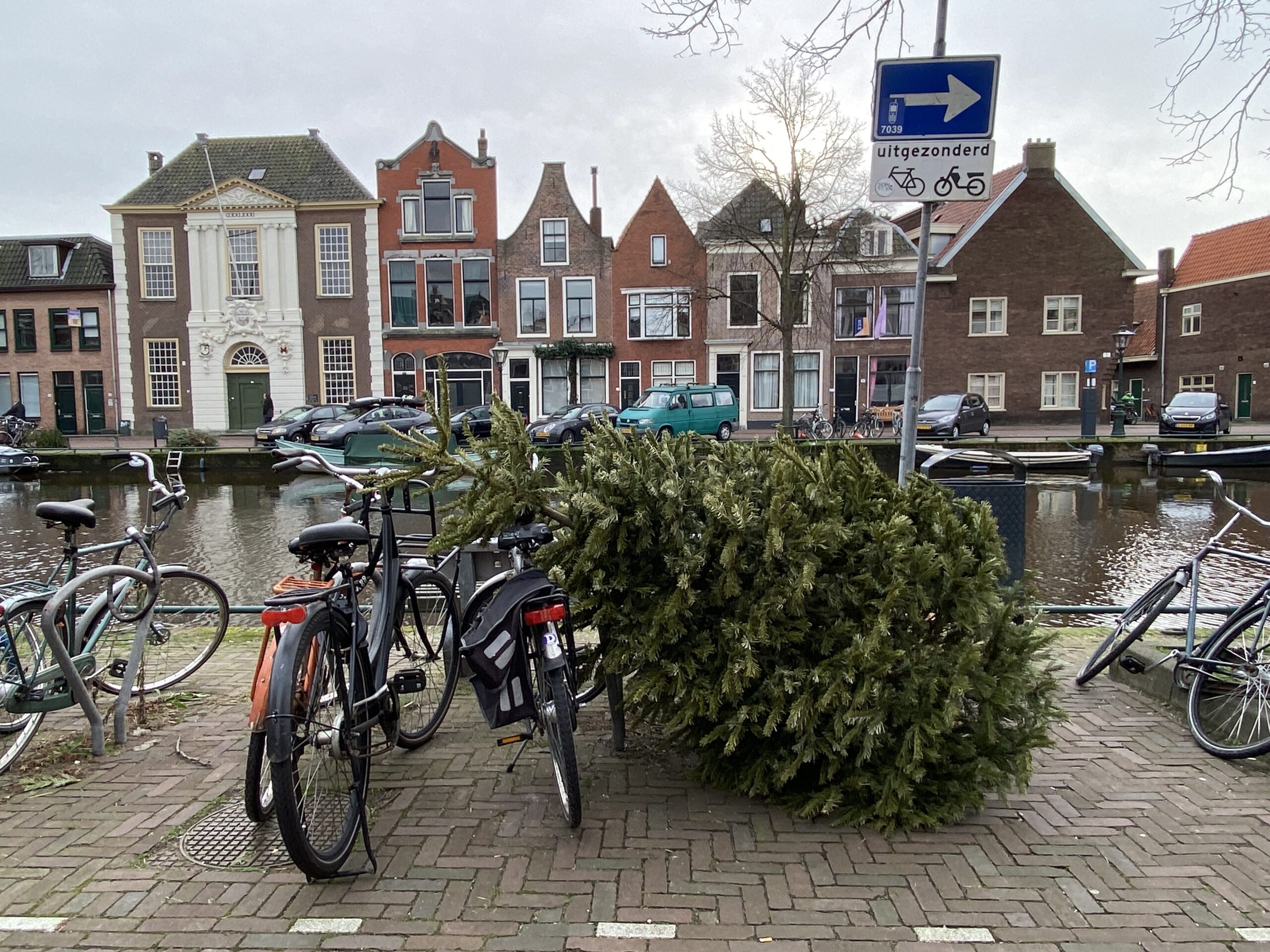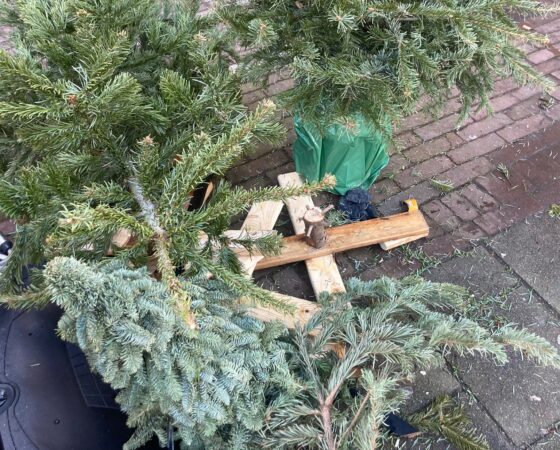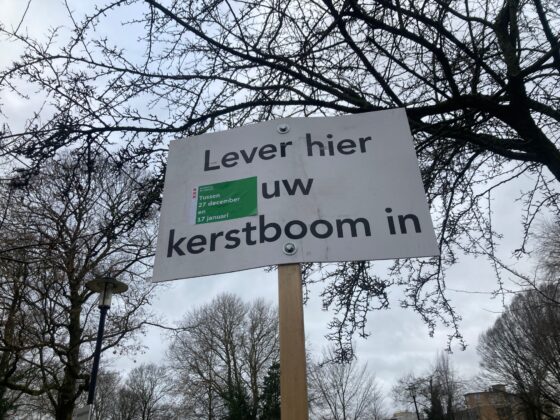Out with the old? What happens to all those Christmas trees?
Brandon Hartley
At this time of the year, you can spot old Christmas trees floating down canals, dumped on sidewalks or even being recycled by elephants. In The Hague alone the council picks up 50,000 Christmas trees after the winter festivities. Brandon Hartley has been finding out what happens to them.
Piles of abandoned Christmas trees are a depressing sight. “The ease with which they are bought leads to the ease in throwing them away,” Rotterdam council spokesman Peter van Druten told Dutch News. “This ensures that huge numbers end up on the street and that, in turn, can lead to dangerous situations.”
Even the countryside is not immune. Around a hundred trees, many of them still decorated, were illegally dumped in a nature reserve in Brabant. Frustrated forest ranger Wim de Jong told NOS that dealing with them was a waste of his time and taxpayer’s money.
“We all end up paying for the disposal costs while the perpetrator pays nothing,” he said.
There are all manner of ideas of how to deal with old Christmas trees, from turning them into beer or tea, to “adopting a tree” which can be replanted once the festivities are over.

But most of the work is up to local councils – who face a veritable mountain of unwanted trees every year.
Utrecht, which collected 31,420 trees last year, converts them into both compost and biomass. In Groningen, the 85% of trees are turned into compost for agriculture and the rest as biofuel. “Composting is more sustainable and efficient,” spokeswoman Natascha van Hooft said.
Rotterdam has a programme that converts trees into compost and offers incentives to locals for bringing them in.
“We’ve set up a successful Christmas tree collection campaign for the second year in a row in which associations, scouts and sports clubs can register,” Van Druten said. “Trees can be handed in at various locations in the city, with the club receiving 50 cents per tree. It is a win-win situation that brings the community together.”
The Hague encourages children to participate through its Verloot je boompje programme. Children in the participating districts collect and hand in the trees in return for a lottery ticket, which could win them a prize.
Leiden deploys a special ‘Christmas tree boat’ to gather trees at the harbour in the city’s Beestenmarkt. This year it docked there during the first weekend in January. Last year, workers and volunteers handed in 75 tonnes of used trees.
“We also have a special Christmas tree team which goes door to door to collect them,” Leiden spokesperson Arend van Berkel said.

In Amsterdam, the tree collection notices began appearing at the beginning of December.
“There are more than 2,300 temporary drop-off locations for Christmas trees in Amsterdam,” city spokesperson Manon Koffijberg said. “We collect trees separately at these locations almost every day.”
The Amsterdam trees – 437 tonnes last year – are handed over to a recycling group that separates the branches and needles from the trunk. The trunks are converted into chips used for heating and energy and the needles and branches gradually becomes compost that, three to four months later, gets used in parks and other locations around Amsterdam.
The fate of the annual tree displayed in Dam Square is a bit more wild. “That Christmas tree always goes to the zoo where it is given to the elephants,” Koffijberg said. The elephants, apparently, use the trunks and branches to scratch themselves.
Thank you for donating to DutchNews.nl.
We could not provide the Dutch News service, and keep it free of charge, without the generous support of our readers. Your donations allow us to report on issues you tell us matter, and provide you with a summary of the most important Dutch news each day.
Make a donation